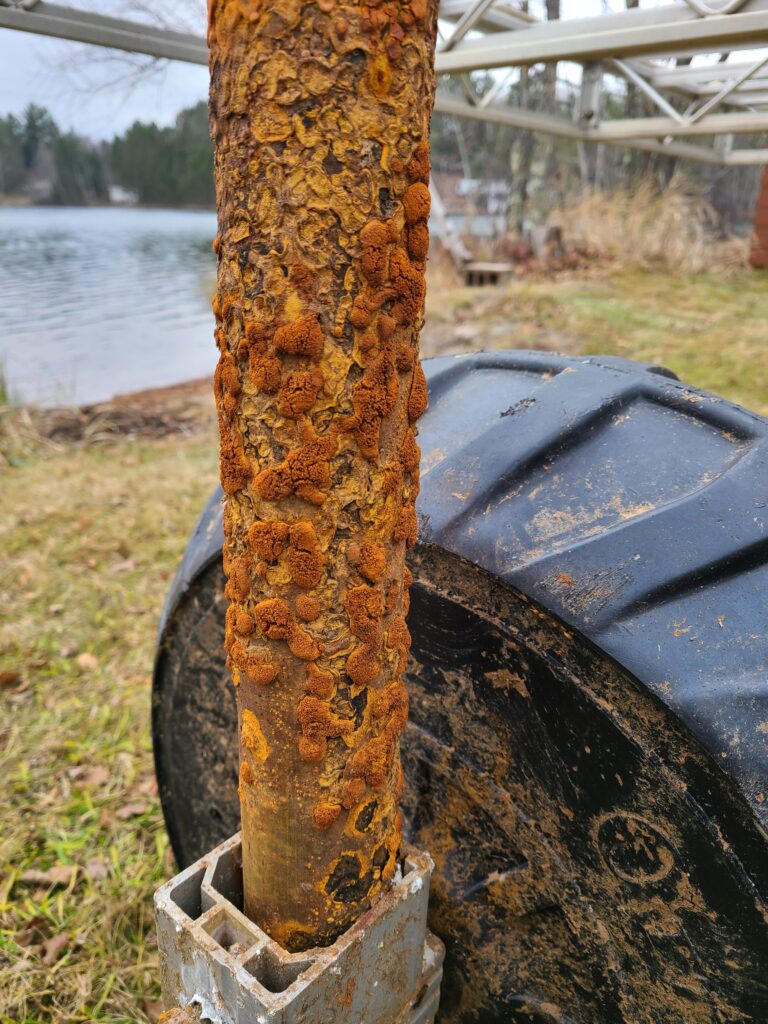
A steel dock post on a lake near Cotton, Minnesota, shows the same biocorrosion tubercles as those found in the Duluth Superior Harbor. Photo taken in 2020. Image credit: Marie Zhuikov, Wisconsin Sea Grant
The calendar has flipped to 2022. Our staff members are ready to tackle new projects in the coming 12 months, which also happens to mark Sea Grant’s 50th anniversary. Before they move more deeply into the new year, however, some staff members took a moment to retain the glow of their favorite 2021 project. Marie Zhuikov shared her thoughts. She’s our senior science communicator.
My favorite project happened right on the cusp of 2021. It all started the previous fall, when I found strange rusty bumps on the steel support legs of our cabin dock. The lumps looked familiar to me because I’d seen similar ones on steel pilings in the Duluth-Superior Harbor. But my dock was on an inland lake in northern Minnesota, far from the harbor. Could the same accelerated corrosion of steel that was happening in the harbor and in Lake Superior be happening in inland lakes?
I knew who to ask about this from interviews for stories that I did about this issue in the past. Some background: Research funded by both Wisconsin Sea Grant and Minnesota Sea Grant determined the cause of accelerated corrosion of steel infrastructure in the Duluth-Superior Port, which was first noticed in 1998. Corrosion of this nature is most often seen in saltwater environments, but Sea Grant work determined it was related to microbial action combined with winter ice scour. Coatings and jackets have been devised, with Wisconsin Sea Grant support, to protect port infrastructure. In 2018-19, the value of harbor assets protected was $5.4 million. An expert panel originally thought the corrosion microbes were only found in Lake Superior waters.
I conferred with Sea Grant researchers and corrosion experts, sending them pictures of my dock legs. The more I dug, the more intriguing and complex the story became. The researchers confirmed the corrosion was caused by the same factors at work in the Duluth-Superior Port. They told me that microbially influenced corrosion problems are not confined only to Lake Superior. Corrosion is impacting steel structures far up the St. Louis River, which empties into Lake Superior, and has been found in several inland lakes.
I wrote a story and produced a podcast about the findings, which led to stories in several local media outlets and magazines. This increased the public’s understanding of the corrosion issue, how to mitigate its effects, and ongoing research efforts to counteract it. My cabin neighbors now know how to keep their dock legs from buckling too soon.
Usually, I get story ideas from scientific journals or research proposals. This story originated because I was paying attention to what was happening out my own back door, so to speak. That’s why it’s my fave for 2021.


